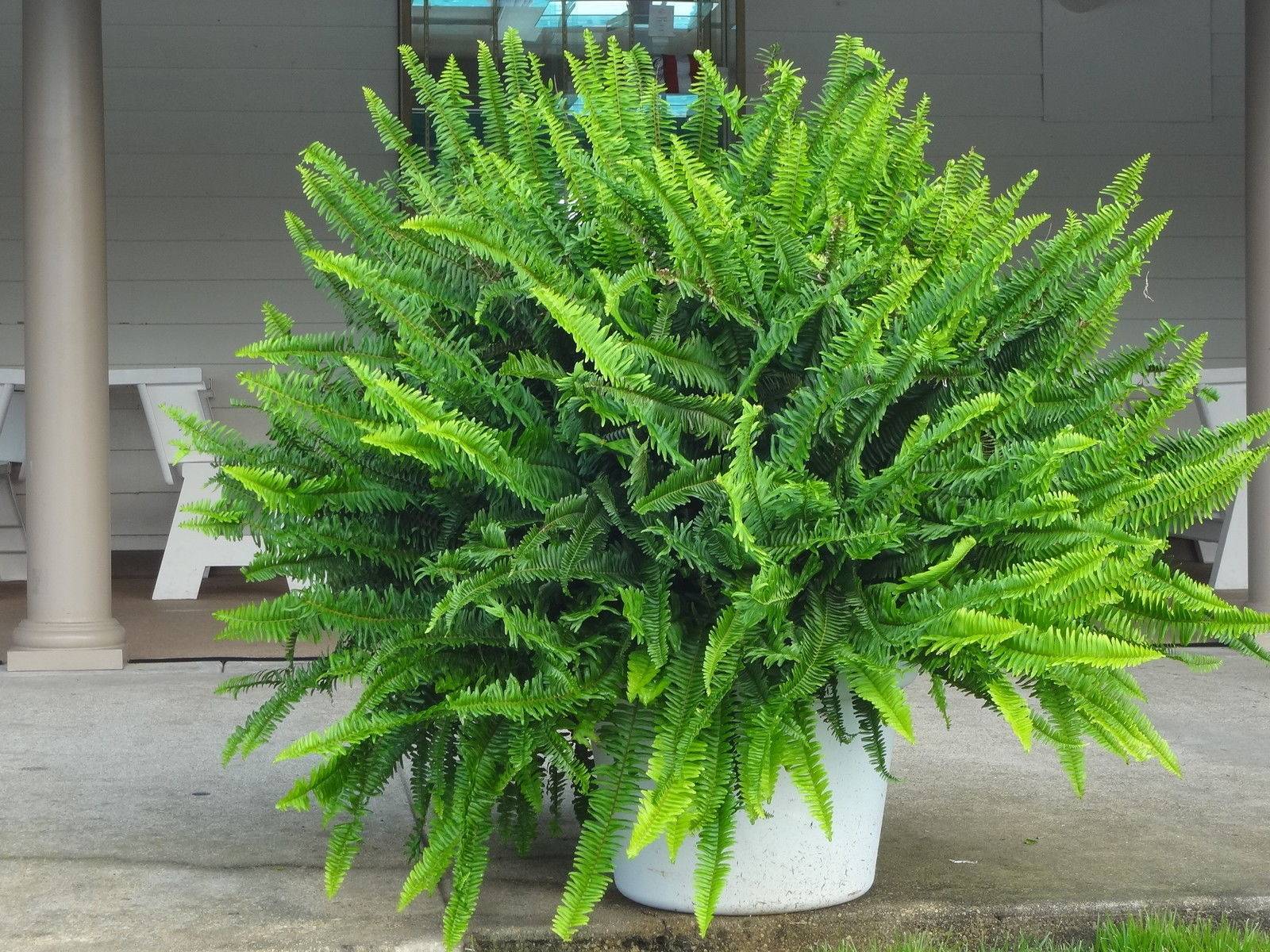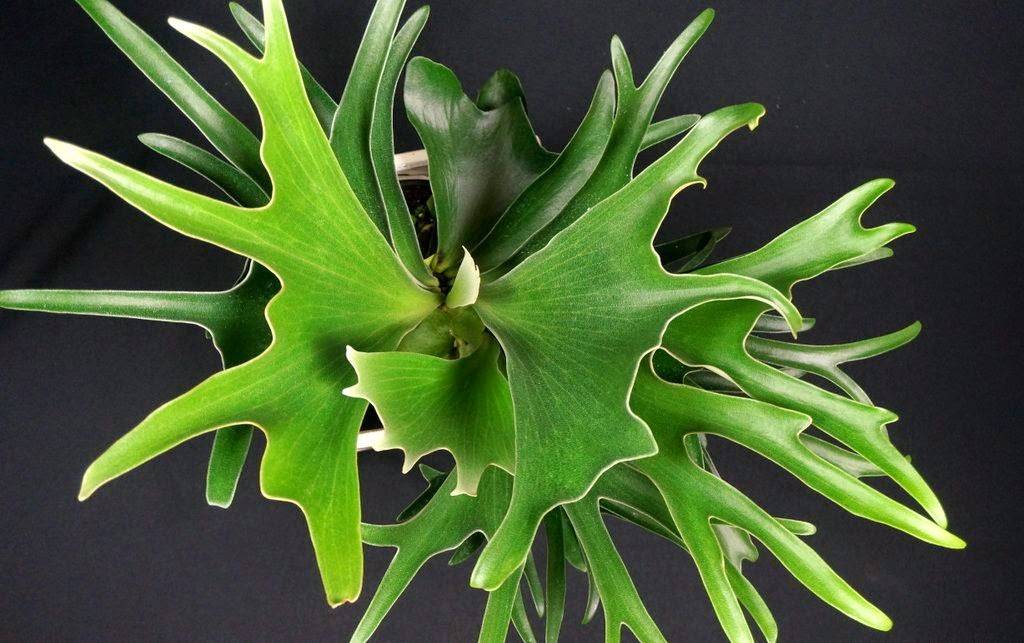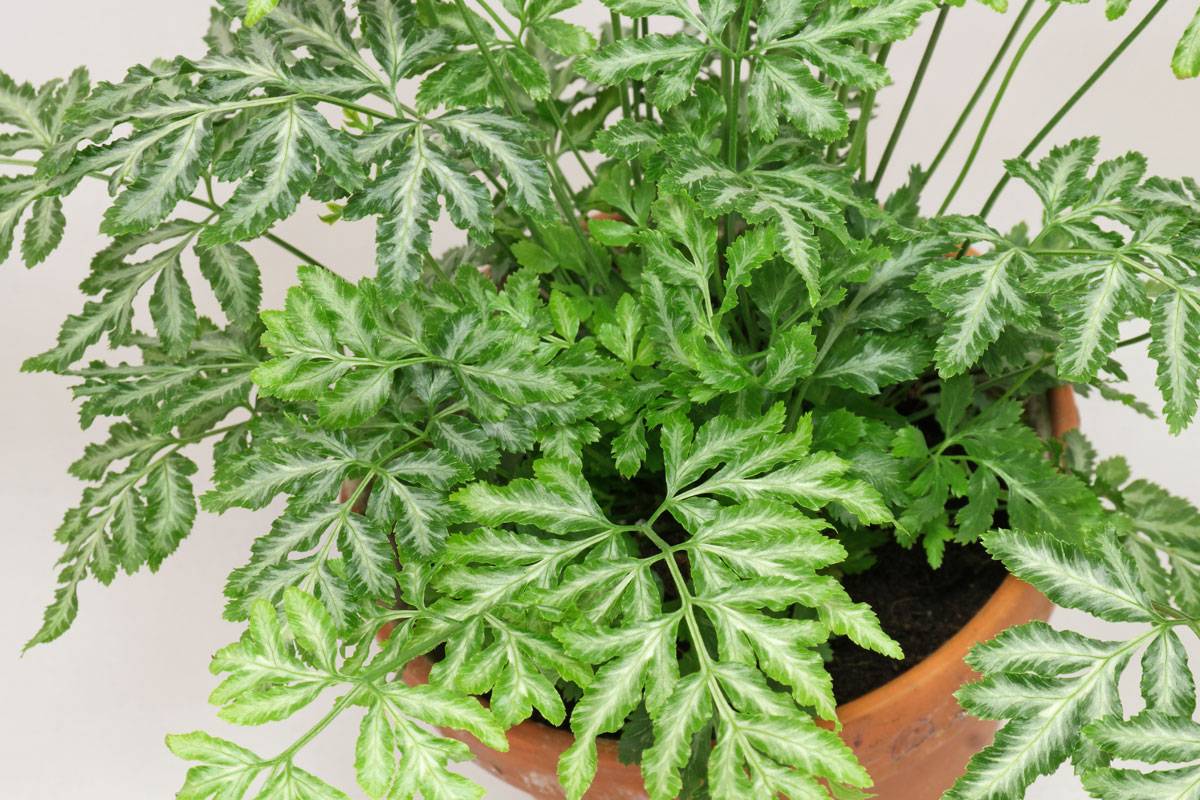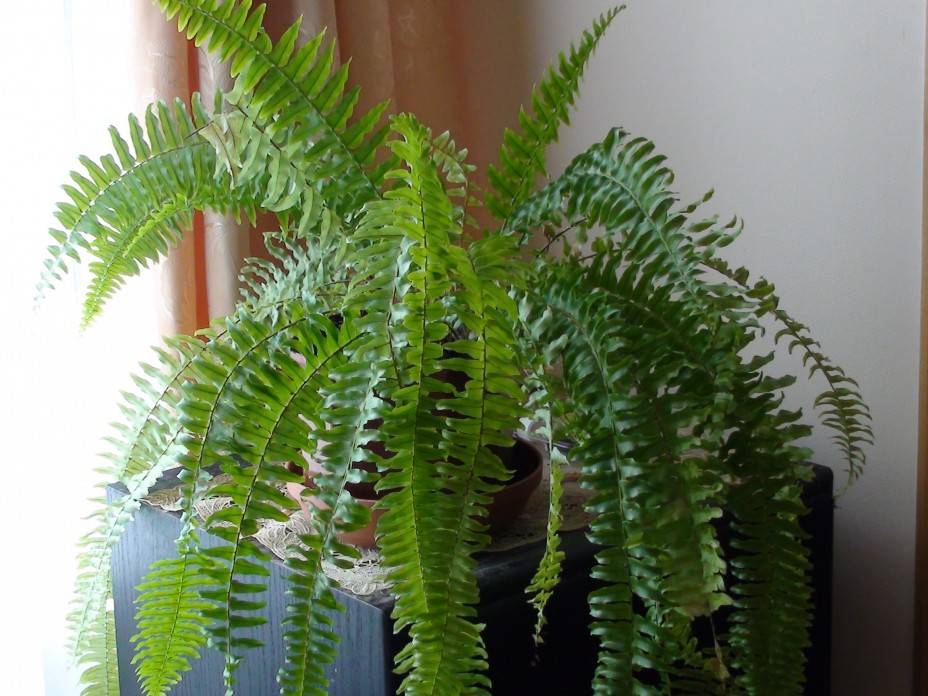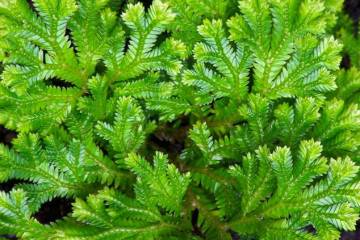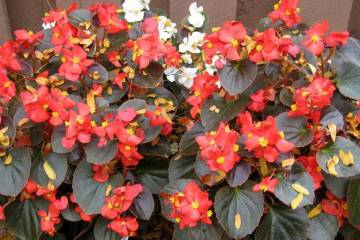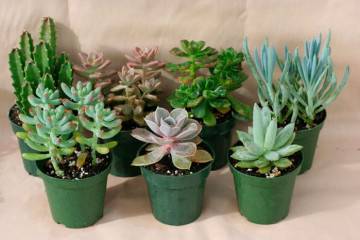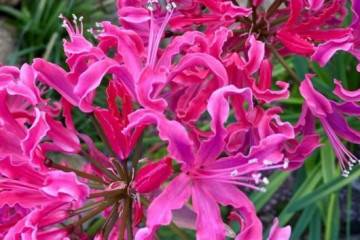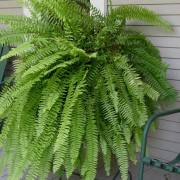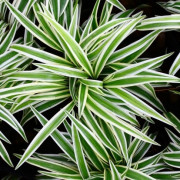Indoor fern - species for growing at home
Content:
The fern is one of the most mysterious and unusual plants. Many legends and tales are associated with it. At the same time, the flower is classified as an unpretentious plant that can decorate and transform even the most dull room.
Indoor fern - what kind of plant is it and can it be planted at home
The indoor fern belongs to the genus Adiantum. Today, there are more than 200 varieties of this plant around the world. Ferns are most commonly found in tropical rainforests. Depending on the species, the plant differs in size, life form, cycle and structural features.
Traditionally, a forest dweller will feel great at home. When growing, there will be no problems, since care will not be difficult.
Despite the fact that every year there are less and less superstitious people, there are still those who associate fern with mysticism and believe that this plant cannot be grown at home.
Others, on the contrary, argue that the plant can harmonize different energies and reconcile quarreled people. There is also an opinion that a flower attracts good luck, improves material well-being and protects people from impulsive actions.
Each person has his own opinion and has the right to independently decide what can and cannot be planted at home from flowers.
The main types of decorative fern for growing at home
Domestic fern belongs to the vascular spore plant family, which differ in shape and leaves.
Nephrolepis
The species entered the house from subtropical and tropical forests. It belongs to the southern herbaceous plants and is distinguished by a lush rosette of light green leaves and a short rhizome. The leaves of the flower are scattered in different directions and can grow up to 70 cm in length.
The appearance is striking in its forms. In addition, the unique properties of this flower cannot but surprise. It has been proven that this variety is able to purify the surrounding air much better than plants grown in the garden.
When growing nephrolepis, it should be borne in mind that the plant loves bright diffused light, so it can be placed on the south window. Watering the flower should be moderate and constantly spray the leaves from a spray bottle.
Asplenium
Belongs to the genus of terrestrial or epiphytic ferns. The variety differs in large leaves, painted in a light green color. The rhizome is short and creeping with small scales on the lower surface.
Indoor plant - asplenium fern is considered unpretentious and very beautiful.
Platycerium, or antlers (Platycerium)
Belongs to the Centipede family. At home, the flower can grow for many years, while it develops slowly. No more than 3 leaves appear on the plant annually.
When growing this indoor fern, home care will not cause problems and difficulties. In addition, it perfectly cleans the air and eliminates the harmful effects of gaseous hydrocarbons.
In order for a plant to develop well, it needs to provide optimal conditions. For this, the temperature should not fall below 12 ° C in winter and is within 25 ° C in summer. Humidity should be medium. You need to water the plant in moderation: in the summer, 2 times a week, and in the winter, the amount of irrigation decreases. With regard to lighting, the plant prefers diffused bright light. If it is not provided, then the flower will grow slowly.
The pot for the Platycerium should be chosen wide and low, since the plant has a poorly developed root system.
Adiantum, or curly fern (Adiantum)
An unusual plant that is distinguished by its special and definite properties. He does not like warmth, but prefers cool and humid environment. Instead of watering, experts recommend immersing the pot completely in water, but be sure to drain the liquid after that.
It is best to grow the plant in loose and acidic soil, enriched with nutrients. For curly ferns, it is best to opt for spacious pots.
Pteris (Pteris)
The most unpretentious, large and easy to grow flower. Outwardly, this plant does not at all resemble a fern. But, despite its atypical appearance, the flower belongs to the most ancient plants on Earth.
The plant is ideal for beginner growers. It is easy to grow and does not require certain knowledge and skills in the care process. The most important thing a flower needs is optimal air humidity.
The plant of this species is very fond of immersion in water. It is recommended to keep the flower pot in water until air bubbles stop appearing on the surface. After that, the water should drain from the ground. Then you can put the flower back in place. To moisturize the fern, it is recommended to systematically spray it with a spray bottle or place a humidifier near it.
This fern at home can be placed anywhere. It perfectly tolerates coolness, shaded areas, sharp temperature fluctuations. The only thing to protect it from is from drafts.
Pellea (Pellaea)
The perennial fern is a member of the Synopteris family. This decorative look is a rosette of curved leaves. Leaves, depending on the variety, are elongated, feathery or rounded.
Fern care is not difficult to take care of. To make the plant feel comfortable, it is enough to provide it with a moderate temperature: in summer from 20 ° C to 25 ° C, and in winter from 13 ° C to 15 ° C. The plant prefers not humid, but dry air, as well as bright diffused light.It is better to protect the flower from direct sunlight. Watering is needed moderate.
Davallia
A perennial shrub with a spreading crown belongs to the Davaliev family. The plant stands out among all other ferns with a shaggy rhizome of a reddish hue. The roots of the flower are fleshy and thick, crawling out of the pot. The plant grows to a height of 950 cm, and the length of the roots can reach 90 cm.
The leaves are pinnately dissected, triangular, bright green.
When purchasing davallia, many are wondering how to care for a fern. The plant is unpretentious and is compact and able to survive in rooms with dry air. Many people choose to plant this fern in a transparent pot.
Reproduction occurs by division. The main feature of a flower is that it grows in width. Particularly impressive are the shaggy aerial roots that hang over the pot.
Blechnum
This fern is one of the most original and whimsical. It is very difficult to care for and grow it, but at the same time it is very beautiful. Differs in a very large size. In appearance, the plant looks like a fern on one side, on the other it resembles a palm tree.
The complex and demanding variety of this luxurious perennial fern is recommended to be grown only by experienced flower growers.
In appearance, the plant resembles a dwarf palm, while it grows very slowly and requires careful maintenance. However, he does not forgive even minor mistakes.
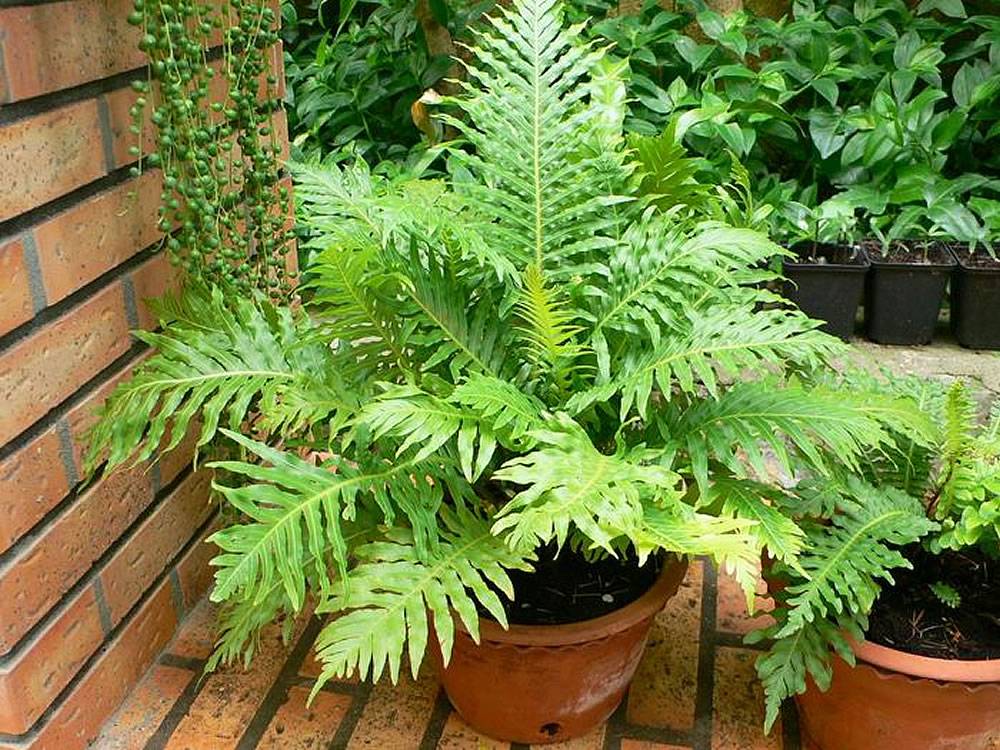
Blehnum is a fern that resembles a palm tree, which can only be grown by experienced flower growers.
What conditions are needed for growing indoor ferns
Most ferns are not demanding for growing conditions. For normal growth and development, it is enough for them to provide optimal temperature, lighting and moderate watering.
Depending on the variety, the conditions for growing indoor ferns vary, but almost all do not require certain knowledge and skills. An exception is the fern called Blehnum. This flower requires some care and strict adherence to all the rules. Even if you do not feed the plant once at the right time, it can be disastrous and lead to disastrous consequences.
Soil and fertilizing
The soil for the indoor fern should be selected according to those parameters that correspond to the forest soil. The plant thrives best in loose soil with peat content. When preparing the soil, it should be borne in mind that it must be with high acidity, and also contain forest leafy soil, as well as sand and humus.
As for fertilizing, if the soil is prepared correctly before planting, then additional fertilization is not required. In the process of growth and development, twice a month, experts recommend applying top dressing so that the fern does not lose its properties and continues to delight with greenery, and also brings benefits by purifying the air. For these purposes, mineral fertilizers should be used.
How to care for a decorative flower at home
For a fern growing at home, it is important to provide proper lighting. Otherwise, the leaves will begin to dry out and the plant will lose its attractiveness.
For the fern leaves to be large, curly, and healthy, the plant needs bright, but diffused light. As for the temperature regime, ferns feel best at 15-22 ° C.
When growing a plant, it is required to provide it with a certain regime. Watering the flower is required regularly, depending on the variety. It is strictly forbidden to allow the soil to dry out, as this will be detrimental to the plant, even after watering the dry land, the fern will no longer recover.
The fern is considered one of the most mysterious plants on Earth. For many years, it was associated only with the forest, but now there are many varieties intended for home growing. To make the flower feel comfortable, it is enough for it to provide care and optimal growing conditions.

